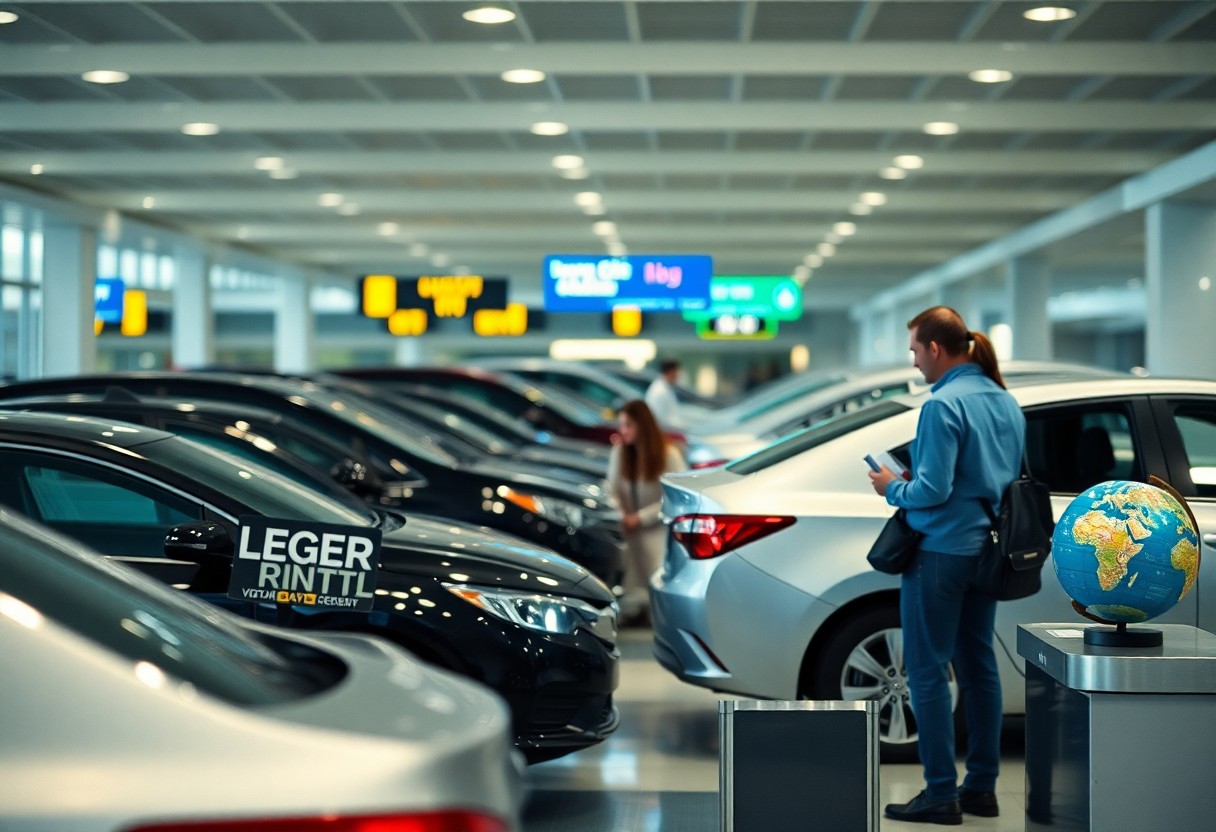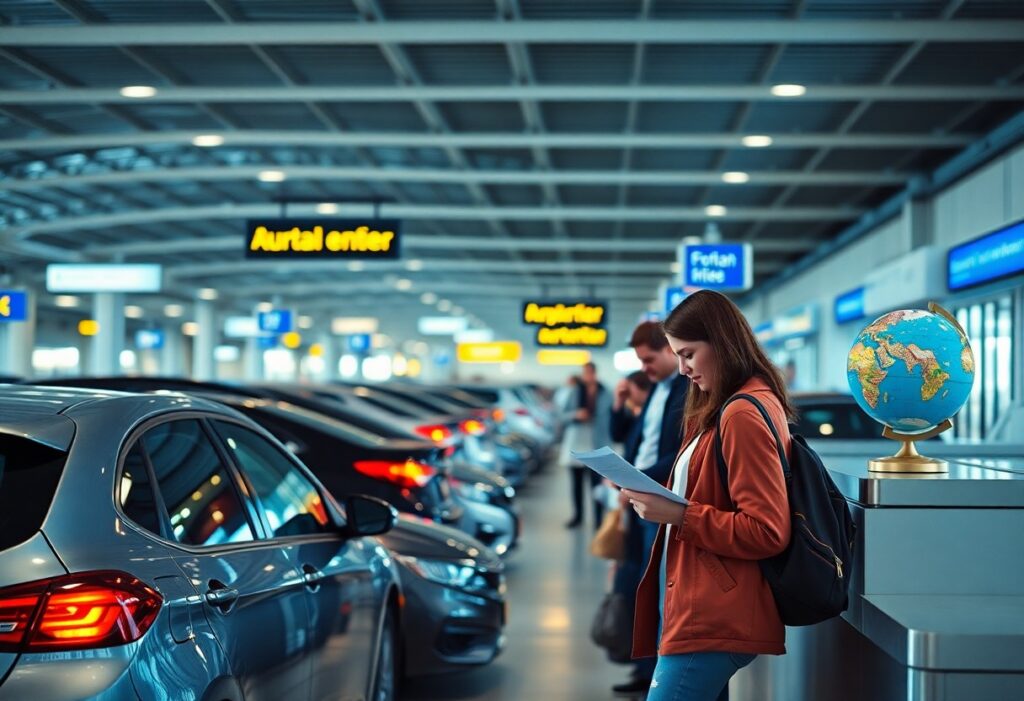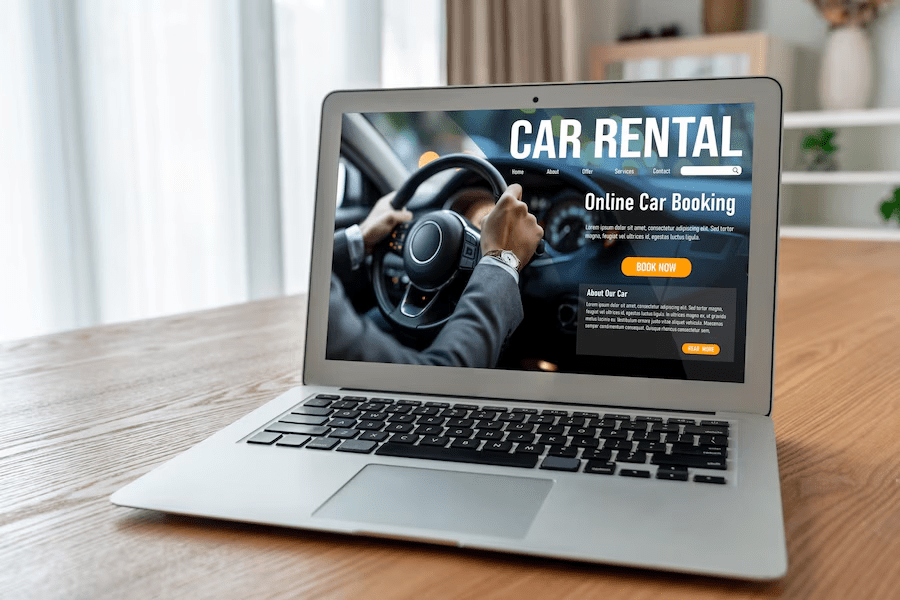Many travelers find renting a car abroad intimidating, but it’s one of the most rewarding ways to explore a new country at your own pace. Whether planning a scenic road trip or needing flexible transportation for business, knowing how to navigate international car rentals can make or break your travel experience. From ensuring proper insurance coverage to understanding local driving laws, your preparation will determine the success of your rental experience. This guide will walk you through everything you need about renting a car abroad, helping you avoid common pitfalls and make the most of your international driving adventure.
Essential Planning Steps
A successful car rental abroad requires careful planning. You must consider your destination’s specific requirements, timing, necessary documentation, and potential restrictions. Preparation should start a few weeks before your trip to ensure you have all the required documents and meet the eligibility criteria.
Timing and Advance Reservations
The ideal time to book your rental car is around 2-3 weeks before your trip. When booking in advance, you’ll typically find better rates and a wider selection of vehicles. During peak tourist seasons or holidays, you should book even earlier, as rental companies often experience high demand.
License Requirements
A driver’s license is one of the most critical requirements for renting a car abroad. You’ll need your valid home country license and, in many cases, an International Driving Permit (IDP), which must be obtained before leaving your home country.
Hence, you should verify the specific license requirements for your destination country. The IDP is valid for one year and is an official translation of your license in multiple languages. You can obtain it through authorized automobile associations in your home country.
Age Restrictions
On average, international car rental companies require drivers to be between 21 and 70 years old. You should be aware that if you’re under 25, you might face additional young driver surcharges and limited vehicle options.
It is essential to note that age restrictions vary by country and rental company. In some European countries, the minimum age is 23; in others, it’s 21. Additional fees can range from $10 to $30 daily for drivers under 25, significantly impacting your rental budget.
Here’s the formatted text according to your requirements:
Budget Management
Some travelers underestimate car rental costs by focusing only on the base rate. A comprehensive budget should include mandatory fees, fuel costs, insurance, and potential cross-border charges. You’ll need to factor in local taxes, which can add 10-25% to your total bill, and consider seasonal price fluctuations, which can significantly impact your rental costs.
Hidden Costs
After securing your rental, watch out for unexpected charges like additional driver fees, GPS rental, child seat costs, and late return penalties. Airport pickup locations often charge premium rates, with surcharges up to 25% more than off-airport locations. Consider picking up your vehicle from a city location to save money.
Insurance Options
Rental car insurance options range from primary liability to comprehensive coverage. You must decide between the rental company’s insurance packages or coverage through your personal auto insurance, credit card benefits, or third-party insurers.
Hence, it is imperative to analyze your existing coverage before purchasing additional insurance. While rental companies offer convenient on-site coverage, it’s often more expensive than third-party options. Your credit card may provide free collision coverage, but you must decline the rental company’s CDW to activate this benefit.
Fuel Policies
Behind every rental agreement lies a specific fuel policy. You’ll encounter options like ‘full-to-full’, ‘pre-purchase’, or ‘return empty’. The full-to-full policy typically offers the best value, requiring you to return the car with the same fuel level as received.
A careful review of fuel policies can save you significant money. You’ll want to avoid the pre-purchase option unless you’re sure to use a full tank, as rental companies often charge premium rates for fuel. The ‘return empty’ policy usually results in paying more for unused fuel, as it’s challenging to return a car with an exactly empty tank.
International Driving Documentation
You’ll need proper documentation to drive abroad for international car rentals legally. Your regular driver’s license may not be sufficient in many countries, and driving without proper documentation can result in hefty fines or legal issues. You’ll need to prepare these documents well before your trip, as some can take several weeks to process.
International Driving Permits
Driving abroad often requires an International Driving Permit (IDP), translating your license into multiple languages. You can obtain an IDP from your home country’s authorized automobile association. It’s valid for one year and must be carried alongside your driver’s license. Without an IDP, you might be denied a rental car in many countries.
Country-Specific Rules
Country-specific regulations vary significantly worldwide. Some nations require additional permits, while others may accept your home license. To ensure compliance with local laws, you’ll need to research your destination’s specific requirements at least one month before your trip.
But beyond basic requirements, each country has unique driving regulations you must follow. For instance, some countries require you to carry safety equipment like warning triangles or reflective vests. Your rental company should provide these items, but you must verify their presence before driving.
Required Papers
You’ll need to carry certain documents while driving around the world. These typically include your passport, driver’s license, IDP, rental agreement, and insurance papers. Keep both physical and digital copies of all documents for added security.
Due to varying international regulations, you should organize your documents systematically. Create a dedicated folder for your rental-related paperwork, and keep it easily accessible. This organization can save you significant time and stress during routine traffic stops or unexpected situations.
Here’s the formatted text according to your requirements:
Choosing the Right Rental Company
Select a reputable rental company that aligns with your needs and budget to keep your car rental experience hassle-free. Consider factors like pricing transparency, vehicle selection, pickup/drop-off locations, and, most importantly, insurance coverage options. Your choice will significantly impact the quality of your travel experience.
Global vs. Local Providers
Around the world, you’ll find both international rental chains and local providers. While global brands like Enterprise and Hertz offer standardized service and widespread locations, local companies might provide better rates and more personalized service. Research shows that local providers can be up to 30% cheaper than international chains.
Reviews and Ratings
On popular travel platforms, carefully examine customer reviews focusing on recent experiences. Look for hidden fees, vehicle conditions, and customer service quality feedback.
Plus, pay attention to patterns in reviews rather than isolated incidents. Check multiple platforms like TripAdvisor, Trustpilot, and Google Reviews for a comprehensive picture. Red flags include consistent complaints about unexpected charges or poor vehicle maintenance.
Customer Support Quality
From the start, test the company’s customer service by contacting them with questions. 24/7 support availability is imperative when renting abroad, as you might need assistance across different time zones.
But don’t just focus on availability—assess their response quality, too. Look for providers offering support in multiple languages and various communication channels. Studies show that companies with multilingual backing have a 20% higher customer satisfaction rate for international travelers.
 Here’s the formatted content as requested:
Here’s the formatted content as requested:
Vehicle Selection Guidelines
Despite the wide variety of rental options available abroad, selecting the right vehicle requires careful consideration of your travel needs, destination, and comfort level with different car types. Your choice will significantly impact both your travel experience and budget.
Size and Capacity
In addition to comfort considerations, you need to match the vehicle’s size to your passenger count and luggage requirements. A compact car might be ideal for city driving, while an SUV could be better for rural areas. Assume that you’ll need at least 1.5 times more space than planned.
Transmission Types
- Manual transmission is standard in many countries
- Automatic vehicles may cost more to rent
- Availability varies by location
| Region | Predominant Transmission |
| Europe | Manual |
| North America | Automatic |
| Asia | Mixed |
| Australia | Automatic |
| South America | Manual |
Local Road Conditions
Local infrastructure quality should guide your vehicle choice. Mountain regions might require vehicles with higher ground clearance, while urban areas are better suited for compact cars. Research typical road conditions at your destination to make an informed choice.
It’s worth noting that road conditions can vary dramatically between countries and even regions. Poor road maintenance, unexpected weather conditions, and different driving cultures can all impact your journey. You should always choose a vehicle that provides an extra margin of safety and capability for your planned routes.
Reservation Process
Many international car rental bookings can be completed through secure online platforms or direct communication with rental agencies. You must choose your pickup location, rental dates, and preferred vehicle type. Booking in advance typically secures better rates and ensures vehicle availability, especially during peak travel seasons.
Online Booking Steps
Contrary to common misconceptions, online booking is the safest and most transparent method. You can compare prices, read reviews, and examine terms and conditions at your own pace. Make sure to select the right pickup location—whether it’s Newark International Airport, LaGuardia Airport, or JFK Airport—and verify all charges before confirming your reservation.
Direct Communication
Around 30% of international travelers prefer direct communication with rental agencies. You can reach out through phone, email, or chat support to discuss specific requirements or clarify doubts. Our multilingual team speaks English, Spanish, Russian, Uzbek, Tajik, and Arabic to ensure clear communication.
In addition to standard inquiries, direct communication allows you to discuss special requests such as child seats, GPS systems, or specific vehicle preferences. Before finalizing your booking, you can also inquire about pickup procedures, documentation requirements, and payment options.
Confirmation Details
You should receive a detailed confirmation email around 15 minutes after booking. This document includes your reservation number, pickup location, vehicle details, and total cost breakdown. Review all information carefully to avoid any surprises upon arrival.
Communication doesn’t end with your booking confirmation. You’ll receive reminder emails with important details about your pickup location, required documents, and contact information. Keep these emails accessible during travel, as they contain imperative reference information.
Here’s the formatted text based on your requirements:
Payment Methods
Unlike domestic car rentals, international bookings require careful attention to payment details. Most rental agencies abroad accept major credit cards and sometimes debit cards, but cash payments are rarely accepted. You must ensure your cards work internationally and have sufficient credit limits for the rental cost and security deposit.
Credit Card Requirements
Against common assumptions, foreign car rental agencies do not accept all credit cards. You’ll need a card in your name with sufficient available credit, typically $500-1000 above the rental cost. Many agencies specifically require a credit (not debit) card, and some may not accept prepaid or electronic cards.
Currency Considerations
Around the world, rental charges may be processed in local currency. You’ll want to check if your rental rate is fixed in your home currency or subject to exchange rate fluctuations. Some agencies offer the option to pay in your home currency, though this might include additional conversion fees.
Understanding currency conversion rates and fees can significantly impact your final costs. Your credit card might charge foreign transaction fees (typically 1-3%), and dynamic currency conversion at rental locations often comes with unfavorable exchange rates. You’ll save money by paying in the local currency and letting your bank handle the conversion.
Deposit Policies
Before finalizing your rental, verify the deposit amount and when it will be released. Depending on the vehicle type and rental agency’s policies, you’ll typically need to provide a credit card authorization hold ranging from $200 to $1000.
With deposit holds you’ll need to consider that these funds won’t be available during your rental period. Depending on your card issuer and the rental company’s procedures, the release time can vary from a few days to several weeks after returning the vehicle. You’ll want to factor this into your travel budget planning.
Vehicle Inspection Protocol
To ensure a smooth rental experience, you must thoroughly inspect your rental vehicle before driving off. This process typically takes 10-15 minutes but can prevent potential disputes about damages later.
Documentation Process
Before accepting the vehicle, you must carefully review and sign the rental agreement’s inspection form. Ensure all existing damages are correctly noted on the diagram and accurately record the fuel level, mileage, and accessories.
Damage Assessment
Examine the vehicle’s exterior and interior with a systematic approach. Pay special attention to commonly overlooked areas like the undercarriage, roof, wheels, and windshield for scratches, dents, or other damages.
Consequently, you should test all vehicle functions, including lights, wipers, air conditioning, and electronic systems. Document any mechanical issues immediately and ensure the rental agent acknowledges them.
Photo Evidence
For your protection, take clear, time-stamped photos of the entire vehicle, including close-ups of any existing damage. This visual documentation can be invaluable if disputes arise about vehicle conditions upon return.
You should also store these photos in a secure location and share them with the rental company if possible. According to rental statistics, 85% of damage disputes are resolved faster when photo evidence is available.
 Here’s the insurance coverage section based on your requirements:
Here’s the insurance coverage section based on your requirements:
Insurance Coverage
Understanding insurance options is necessary for financial protection when renting a car abroad. Most rental companies offer different levels of coverage, from basic to comprehensive protection. You’ll need to carefully evaluate your needs and existing insurance before deciding.
Basic Protection
Protection typically includes Collision Damage Waiver (CDW) and Third-Party Liability (TPL). These coverages protect you against basic accident-related damages and third-party claims. Your rental agreement will include a deductible amount, usually from $500 to $2,000, which you’re responsible for in case of damage.
Additional Coverage
Coverage options beyond essential protection include theft protection, personal accident insurance, and glass-tire coverage. These supplementary policies can significantly reduce your financial exposure during the rental period.
Further, you might consider adding coverage for personal belongings, roadside assistance, and zero-deductible options. While these extras increase your daily rate by $10-30, they provide comprehensive protection against unexpected situations.
Personal Insurance Validity
Protection from your personal auto insurance or credit card might extend to international car rentals. Contact your insurance provider before your trip to verify your existing coverage abroad.
This verification process helps you avoid paying for duplicate coverage and ensures you understand any coverage gaps. You should also check if your credit card offers rental insurance when you use it for the entire rental payment.
Pickup Procedures
Not knowing what to expect at the pickup counter can lead to delays and frustration. Prepare for a thorough vehicle inspection, paperwork review, and payment processing. You must sign the rental agreement outlining terms, insurance coverage, and fuel policy. Take photos of any existing damage to protect yourself from future claims.
Location Options
Below are the critical pickup locations: airport terminals, city centers, and hotel delivery services. Airport locations in NY and NJ typically offer 24/7 service, though they may charge higher fees. City center locations often provide better rates but have limited operating hours. Consider your arrival time and convenience when selecting a pickup point.
Time Management
Behind-schedule pickups can disrupt your travel plans. Allow 30-45 minutes for pickup, especially at busy airport locations. Peak travel times, like holidays and weekends, may require additional waiting time.
Another essential consideration is planning your pickup time around your flight arrival. Schedule your pickup at least one hour after landing to account for baggage claim and customs clearance. This buffer helps avoid rushing and potential late pickup fees.
Required Documents
Documentation management is crucial for a smooth pickup. You’ll need your valid driver’s license, passport, credit card, and booking confirmation. International travelers must also present an International Driving Permit if their license isn’t in English.
Due to varying requirements across rental companies, verify all necessary documentation before your trip. Some locations may require additional proof of travel insurance or return flight tickets. Your credit card must have sufficient funds for the security deposit, which can range from $200 to $500.
On-Road Essentials
After picking up your rental car, ensure you have all vital items for safe travel. Your checklist should include the rental agreement, insurance documents, a spare tire with tools, warning triangles, and a first-aid kit. Keep these items readily accessible in your vehicle at all times.
Emergency Contacts
Below is a list of contacts you should have readily available: your rental agency’s 24/7 support number, local police (911 in the USA), roadside assistance, and your insurance provider. Save these numbers in your phone and keep a written copy in the glove compartment.
Local Traffic Rules
For safe driving in NY and NJ, you need to understand that speed limits are strictly enforced. The standard speed limit is 65 mph on highways and 25-35 mph in urban areas. Right turns on red are permitted unless explicitly prohibited by signs.
Rules vary significantly between states and cities. In NY and NJ, you must maintain a safe distance from other vehicles, use turn signals when changing lanes, and yield to emergency vehicles. Cell phone use while driving is strictly prohibited unless using hands-free devices.
Navigation Tools
Below are vital navigation resources for your journey. While your rental car might include a GPS system, it’s recommended that you have a backup navigation solution. Download offline maps for the NY and NJ areas to ensure continuous navigation even without an internet connection.
With modern technology, you have multiple navigation options. Popular apps like Google Maps or Waze provide real-time traffic updates and alternative routes. These apps can help you avoid toll roads and provide accurate ETAs based on current traffic conditions in the NY and NJ areas.

Return Process
If handled correctly, your rental car return should be smooth. Plan to arrive at least 30 minutes before your scheduled return time to complete all necessary procedures. Ensure you’ve collected all personal belongings and have your rental agreement ready for reference.
Fuel Requirements
For most rental agreements, you must return the vehicle with the same fuel level as when you received it. Keep your final fuel receipt as proof of refueling. Many rental locations require the receipt from a gas station within 10 miles of the drop-off point.
Time Planning
Check your rental agreement for the exact return time to avoid late fees. Many companies offer a 29-minute grace period, but exceeding this could result in an extra day’s charge.
Planning your return route is crucial, especially when returning to airport locations. Consider potential traffic delays and allow extra time during peak hours. Airport returns might require specific terminal approaches or dedicated rental car facilities.
Final Inspection
Below is what happens during the return inspection: staff will check the vehicle’s condition, mileage, and fuel level. Request a final inspection report and keep the signed return receipt for your records.
Remember to document the car’s condition with photos during the final inspection. This provides evidence of the vehicle’s state at return and protects you from potential post-return damage claims. Ask the staff to note any minor scratches or dents on the return form.
Here’s the structured response according to your requirements:
Problem Resolution
All rental car issues require immediate attention to prevent escalation and additional charges. Your quick response and proper documentation can distinguish between a minor inconvenience and a significant problem during your international travel experience.
Common Issues
At some point during your rental, you might face challenges like vehicle breakdowns, billing disputes, or damage claims. Keep your rental agreement handy and take photos of the car before and after your rental period. Your thorough documentation will serve as valuable evidence if disputes arise.
Company Contacts
Problem resolution starts with knowing who to contact. Save the rental company’s 24/7 emergency number, local office contact, and international support line on your phone. These details are in your rental agreement and the company’s mobile app.
Even when traveling abroad, you can reach customer service through multiple channels. Many rental companies offer live chat support through their websites, email assistance, and social media response teams that can help resolve issues in real time.
Legal Rights
Between different countries, your rights as a car renter may vary significantly. Most rental agreements are governed by local consumer protection laws, providing specific rights regarding vehicle quality, pricing transparency, and dispute resolution.
Legal protection varies by jurisdiction, but you’re typically entitled to a roadworthy vehicle and fair treatment regarding charges. If you’re renting in the EU, you benefit from standardized consumer protection laws, while in the US, regulations vary by state. Keep copies of all documentation to support potential claims.
Conclusion
You can see above that renting a car abroad requires careful planning and attention to detail. Your successful international car rental experience depends on understanding documentation requirements, insurance options, and emergency procedures. By following these guidelines and tips, you can navigate the rental process confidently, ensuring your travel plans run smoothly. With proper preparation and the right rental company, you’ll be ready to explore your destination with the freedom and flexibility of having your wheels on foreign roads.





Ah, the joys of renting a car abroad—it’s like a rite of passage wrapped up in a game of ‘Guess Who’ but for rental agreements! I once had a memorable experience in Italy where my “compact” car turned out to be a tiny hatchback that felt like an oversized go-kart on the winding Amalfi Coast roads. The locals laughed as I squeezed it into a parking space smaller than my suitcase.
Renting a car abroad really does feel like a rite of passage, doesn’t it? Your experience in Italy captures that perfectly. I’ve had a few similar moments myself—like when I expected a “full-size” sedan in Spain and ended up with something that felt more like a glorified golf cart. The winding roads in those places can turn even the most straightforward drives into a bit of an adventure. It’s kind of humbling too, realizing just how skilled the locals are at navigating those narrow streets in what seems like a perfectly sized vehicle.
Speaking of memorable driving adventures, I found this great read on exploring Marseille’s vibrant culture and history that might just help you find the perfect pit stops during your next rental escapade.
‘Top things to do in Marseille explore the city’s rich culture and history’
https://rentacar24.org/mustdo-activities-for-exploring-marseilles-culture/.
Renting a car abroad really does open up a different side of travel, doesn’t it? Your experiences in Spain resonate with me. It’s funny how expectations can clash with reality when it comes to vehicle sizes in different countries. I’ve found that while we might expect something akin to our comfortable sedan back home, we’re often greeted with vehicles that feel more suited for navigating through a village square than cruising along a highway. Those little cars do have their charms, though; maneuvering through narrow streets and finding the hidden gems tucked away off the beaten path can lead to some delightful surprises.
You’ve really hit on an essential part of travel—those unexpected moments that turn into stories we cherish. I can relate to your experience with the “full-size” sedan; it’s funny how our expectations can lead to surprising adventures. Those winding roads in Italy can be both thrilling and a bit daunting, especially when you see the locals effortlessly maneuvering through tiny streets in their compact cars. You get a real appreciation for the skill it takes to drive in those conditions.
You bring up such a good point about those unexpected moments. It’s funny how travel has this way of throwing us curveballs that transform into the best stories later on. I remember when we were in Italy, thinking we’d glide our way through the countryside in that “full-size” sedan, only to find ourselves wedged between a wall and a very determined Vespa rider. That was a real eye-opener about the difference in driving styles!
Your experience sounds like such a quintessential travel moment. It’s amazing how those compact cars can really surprise you, right? A tiny hatchback on the Amalfi Coast does add a whole new layer to the adventure. I can just picture you expertly maneuvering through those narrow roads, while the locals shake their heads or chuckle.
Your experience in Italy sounds like a memorable adventure! It’s funny how often expectations clash with reality when it comes to car rentals. The allure of the classic “compact” label can lead to some rather surprising choices. Those little hatchbacks might feel like go-karts, especially when you’re navigating those narrow streets along the Amalfi Coast, where every corner seems to bring a new challenge.
I feel you on that one! Renting a car abroad really can feel like stepping into an elaborate puzzle. I remember grappling with my own version of the “compact” car conundrum when I was in Portugal. I thought I’d be cruising around in a cute little ride, but what I ended up with was more like a glorified shopping cart on wheels. I had visions of zipping around the Algarve, but instead, I found myself negotiating the narrowest streets I’ve ever seen, where even the pigeons seemed to look at me sideways!
Your experience perfectly captures the nuances of renting a car abroad. The expectations versus the reality can lead to some amusing—and occasionally frustrating—moments. I’ve found myself in similar situations, thinking I’m getting a charming little vehicle to explore winding streets, only to discover it’s more suited for a shopping plaza than a coastal drive.
Your experience in Italy sounds like quite the adventure! The image of you squeezing into a space smaller than your suitcase really paints a picture. That’s one of those travel moments that you can’t help but laugh about later, even if it feels a bit ridiculous in the moment.
Ah, the joys of renting a car abroad! It’s like participating in a high-stakes game of automotive roulette. I still chuckle remembering my first attempt in Italy, where I boldly navigated my way out of the airport, only to realize that I was (surprise!) on the wrong side of the road. Turns out, the Italian countryside is absolutely breathtaking when you’re not merging head-on with a vineyard tour bus.
Renting a car abroad always sounds like a thrilling adventure until you’re knee-deep in documents and trying to decipher whether that “roundabout” sign means “you’re now in the circus.” Last summer, I found myself debating whether I needed a special license to cruise through the charming streets of Paris or just a lot of croissants and some courage. Turns out, the only thing you really need is a good map (or a reliable navigation app that doesn’t lead you into a canal).
Navigating the ins and outs of renting a car in a new country can definitely feel like a bit of a circus at first. Those roundabout signs can be particularly baffling. In France, for instance, remember that the driver already in the roundabout usually has the right of way, which can add to the adventure if you’re not used to it.
I completely resonate with your insights on the challenges of renting a car abroad. It can feel daunting at first, especially with all the unfamiliar rules, regulations, and driving customs one often encounters in a new country. I vividly remember my first experience renting a car in Ireland. While I was excited about the prospect of driving along the stunning coastline, the thought of navigating the left side of the road made my stomach churn a little!
Renting a car in a foreign country can stir up a mix of excitement and anxiety, can’t it? Your experience in Ireland really resonates with many travelers. The thrill of exploring a new landscape like the Irish coastline is something special, but dealing with driving on the left side adds a layer of challenge that not everyone is ready for. It’s definitely a mental shift, especially when you also take into account local road signs and the sometimes unpredictable driving habits of others.
I totally understand that feeling of apprehension before hitting the road in a new country—especially when it comes to something like driving on the opposite side. My first experience was in Australia, and I remember feeling nervous about not only the road rules but also the roundabouts. It felt like a strange puzzle trying to figure out when to yield and how to navigate.
Renting a car abroad indeed opens up a world of exploration that public transport can’t quite match. I remember my trip to Italy, where I had the chance to drive along the Amalfi Coast. The narrow, winding roads were challenging but provided breathtaking views and the freedom to stop whenever I wanted. However, preparation was key; I made sure to check the local driving laws and got an International Driving Permit, which made the process smoother.
I totally get the intimidation factor when it comes to renting a car abroad—it can seem like a daunting task. But honestly, once you get the hang of it, it really opens up a whole new world of exploration. I remember my first time driving in Italy; I was so nervous about navigating the narrow streets and figuring out the roundabouts! But once I got into the groove, it became one of the highlights of my trip.
I hear you on that intimidation factor. It’s natural to feel a bit overwhelmed when you’re about to drive in a new country, especially when those narrow streets and roundabouts come into play. But isn’t it interesting how facing that initial anxiety can lead to unforgettable experiences? Driving through local neighborhoods or stumbling upon hidden gems off the beaten path can really change the way you connect with a place.
I completely get that anxiety that comes with driving in a new country. I felt it so much when I first drove in England, especially navigating those roundabouts. It’s almost like a rite of passage, though, isn’t it? Once you get through that initial tension, the rewards can be incredible—like when I stumbled upon a little bakery in a tiny village that wasn’t in any travel guide. Those unexpected moments often turn out to be the most memorable.
I appreciate your insights on the intricacies of renting a car abroad. It’s fascinating how many travelers shy away from this option due to the lingering fear of the unknown, but as you rightly pointed out, it’s one of the most liberating ways to navigate a new country. I’ve had my share of experiences renting cars in various countries, and I can attest to the unique freedoms it brings, like exploring those hidden gems that standard tours often miss.
It’s inspiring to hear about your experiences with renting cars abroad. There’s a certain thrill that comes with stepping out of your comfort zone and setting your own pace on unfamiliar roads. Many travelers overlook this option because of concerns about driving in a new environment. It’s easy to understand why—roads, rules, and even the way people drive can differ remarkably from what you’re used to. But those very differences often lead to some of the most memorable adventures.
I completely resonate with what you’ve said about stepping out of your comfort zone. I remember my first experience renting a car in Italy—it was exhilarating but definitely a bit nerve-wracking. The winding roads of the Amalfi Coast are not just beautiful; they’re a true test of one’s driving skills. I had to familiarize myself with the local driving habits, which can feel chaotic at first, but it also forced me to be more present and engaged in the experience.
You’ve hit on something really important about traveling—how stepping out of our comfort zones can lead to some incredible experiences. I get that apprehension many feel about driving in unfamiliar places. It can be intimidating to navigate not just different road rules, but also the unique driving behaviors of locals.
It’s interesting how much our experiences shape our views on travel, isn’t it? I’ve always found that renting a car can lead to some of the most memorable adventures. I remember driving along the Amalfi Coast, stopping at tiny cafes where I could barely communicate but enjoyed the best homemade pasta. There’s something about the spontaneity that makes it feel more personal.
I completely resonate with what you said about how experiences shape our views on travel. Driving along the Amalfi Coast sounds incredible, and it’s those spontaneous moments—like discovering hidden cafes or little local spots—that often create the best memories. I had a similar experience when I rented a car in New Zealand. The roads were winding and the scenery was breathtaking, but it was really the random stops along the way that I cherish the most.
I completely relate to your perspective on travel and how our unique experiences guide our perceptions. Renting a car definitely opens up a whole new level of freedom. I had a similar experience in the Scottish Highlands. Being able to drive through the winding roads and stop at remote villages felt so liberating. Those unplanned stops often lead to the best moments—like stumbling into a small bakery and finding the most amazing shortbread.
Renting a car abroad can indeed seem daunting at first, but it opens up a world of possibilities for exploration that you simply can’t get from public transport. I remember my first experience driving through the picturesque countryside of Italy. The freedom to stop at small villages and savor local cuisine created unforgettable memories that would have been impossible otherwise.
Ah, renting a car abroad—it’s like playing a game of “Will my GPS betray me today?” Seriously, the balance between figuring out the steering wheel on the “other side” and navigating left turns at roundabouts can feel like a high-stakes game show. I’ve found that a little local knowledge goes a long way. For instance, in Italy, you can’t just take in the stunning views of the Amalfi Coast at your leisure—you might also dodge the occasional Vespa that thinks it owns the road.
I completely resonate with the points made in this post about the nuances of renting a car abroad! My own travel adventures have led me to some incredible experiences on the road—and I’ve learned a few lessons along the way.
I really appreciate you diving into the nuances of renting a car abroad! It’s true that for many travelers—myself included—the idea can be pretty daunting. I remember my first experience was in Italy, and it felt like a leap into the unknown, what with the differing road signs and the infamous roundabouts. Your suggestion about starting planning a few weeks in advance is spot on. I learned the hard way that not all car rental companies accept certain driving licenses, and I ended up scrambling to get an International Driving Permit just days before my trip.